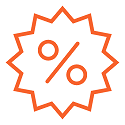Domestic reverse charge for Construction Industry Scheme (CIS)
 When VAT reverse charge for the Construction Industry Scheme (CIS) applies?
When VAT reverse charge for the Construction Industry Scheme (CIS) applies?
You have to do CIS VAT reverse charge when all the following are met:
- The supply for VAT consists of construction services and materials ie it doesn’t apply to supplies of staff or workers
- VAT rate should be at standard or reduced-rate of VAT ie VAT exempt supply doesn’t apply.
- Supplier and customer are registered for CIS and VAT.
- The customer intends to make an ongoing supply of construction services to another party.
- The supplier and customer are not connected.
The CIS reverse charge does not apply to taxable supplies made to the following customers:
- A non-VAT registered customer
- ‘End Users‘ i.e. a VAT registered customer who is not intending to make further on-going supplies of construction. Supplier need confirmation of end user status from customer.
- Intermediary customers who are connected, e.g. a landlord and his tenant, two companies in the same group.
VAT Flat Rate Scheme (FRS)
What is VAT Flat Rate Scheme (FRS)?

The VAT Flat Rate Scheme (FRS) is simplified VAT accounting scheme. You can apply a lower flat rate percentage to gross sales instead of taking input and output VAT.
- You use flat rate percentage for your business type to the VAT inclusive turnover to calculate VAT payable.
- For the first year of your VAT registration you can apply a 1% discount to the Flat Rate percentage.
- You cannot recover VAT on expense except capital items worth more than £2,000 (including VAT).
However, when you sell these goods, you need to account for output VAT at the normal VAT rate, not the flat rate scheme rate.
Turnover for the FRS calculation includes:
- VAT inclusive standard rated income,
- Reduced rate income
- Zero-rated income
- Exempt income, including rental income.
Flat Rate turnover excludes any income which is outside the scope of VAT, such as interest, sales to overseas business customers and the sale proceeds of any goods on which VAT was not allowed to be claimed on purchase.
Who can join or leave VAT FRS?
- You can use FRS until £230,000 (including VAT) of turnover.
- If your turnover is expected to fall below £191,500 in the year after you reach the £230,000 turnover figure, you may, with HMRC’s consent continue to stay in the scheme.
Who cannot join the FRS?
If your business falls within the following categories, you cannot register for the FRS:
- previous user of the FRS and ceased using the FRS within the last 12 months
- received a VAT penalty for dishonesty or convicted of a VAT offence in the last 12 months
- part of a VAT group within the last 24 months
- closely associated with another business, test by financial, economic and organisational links
- user of the second hand Margin scheme – e.g. car sales, antiques etc.
- user of the auctioneers’ scheme
- user of the Tour Operators margin scheme
- assets within the Capital Goods Scheme
Bad debts on the FRS
Even though you will be applying a reduced VAT percentage to your gross sales in order to calculate the VAT payable, the rate used when recovering VAT on bad debts is not the same flat rate percentage. Instead, the full VAT on the bad debt is recoverable.
If you are using cash accounting, you can recover the difference between the VAT that you would have paid under the FRS if the debt was paid and the full VAT amount on the invoice.
Example
A business using the FRS with a FRS percentage of 15% had a bad debt of £10,000 + VAT, totalling £12,000, qualifying for VAT relief.
If you use standard (invoice) accounting, you will have paid HMRC VAT £1,800 (£12,000 x 15%) on the sale. When the debt turns bad it can recover the full £2,000 in respect of the bad debt on its VAT return.
If you use cash accounting, no VAT will have been paid to HMRC. You would have paid £1,800 if the debt was paid, you can therefore recover £200 on your VAT return (£2,000-£1,800) in respect of the bad debt, being the difference between the full VAT and the VAT based on the FRS rate.
Limited cost trader for VAT Flat Rate Scheme
You will be a limited cost trader if your VAT inclusive expenditure on relevant goods is either:
- Less than 2% of VAT inclusive turnover at each VAT quarter, or
- More than 2% of VAT inclusive turnover, but less than:
- £1,000 per annum for taxpayers using annual accounting, or
- £250 per quarter.
If you are a limited cost trader and you will need to use 16.5% flat rate instead of your own lower rate to calculate the amount of VAT due to HMRC under the scheme.
What are the Relevant goods for limited cost trader?:
- Any goods supplied, acquired from another EU member state or imported where exclusive ownership of the goods transfers to you
- Goods owned by you that are transferred from another EU member state to the UK (transfer of own goods).
- Goods purchased by you under a hire purchase or similar agreement where title to the goods will transfer to you at some point in the future
- Water, any form of power, heat, refrigeration or ventilation (excluding equipment hired to generate these goods)
- You should use the relevant goods exclusively for the purposes of your business
Can I claim Pre-registration input tax?
When you become VAT registered you may claim back input VAT on expenses incurred prior to registration.
There are different time limits depending on whether the input VAT relates to services or to capital items.
- You can claim back any input VAT on services paid for in the last 6 months, e.g. telephones, software).
- You can claim back input VAT on good in hand (stationery).
- For capital items, it depends on the type of item. The time limits being:
- 4 year limit for most capital items, e.g. furniture and equipment.
- There is a 10 year claim limit if you are spending more than £250,000 on land and buildings or construction under the separate VAT Capital Goods Scheme.
- The limit is five years if you bought computer hardware costing more than £50,000 (or a ship or aircraft).
Bad Debt Relief
When your customer didn’t pay for invoice at certain point, you can claim VAT on the invoice providing following conditions (It’s called Bad Debt Relief):
- You have supplied goods or services and have accounted for and paid the output tax to HMRC
- You have written off the whole or part of the consideration in your account as a bad debt
- The debt itself must not have been paid or sold on
- The debt must be at least six months old (ie six months have elapsed since the later of the date of the supply and the due date for payment as specified on the invoice).
You must claim it within 4 years and 6 months from the later of the date of the supply and the due date for payment as specified on the invoice.
When is Time of Supply for VAT Return (VAT Tax Point)?
When is VAT date (basic tax point) on invoice for VAT return?
For a supply of goods, the basic tax point is the date the goods are delivered, made available or collected (often called the date of “despatch”).
For services, the date of supply is when the services are performed ie all of the work has been completed with the exception of raising the invoice.
You should prepare VAT returns according to VAT Tax Point.
Basic Tax Point Overridden
The basic tax point can be overridden by a different date in two situations:
- where there is a receipt of a payment before the basic tax point date or when the tax invoice is issued before the basic tax point date. In these cases, the earlier date becomes the actual tax point.
- if the basic tax point has not been overridden by an earlier invoice or payment; and a tax invoice is issued in the 14 day period after the basic tax point; the invoice date becomes the actual tax point.